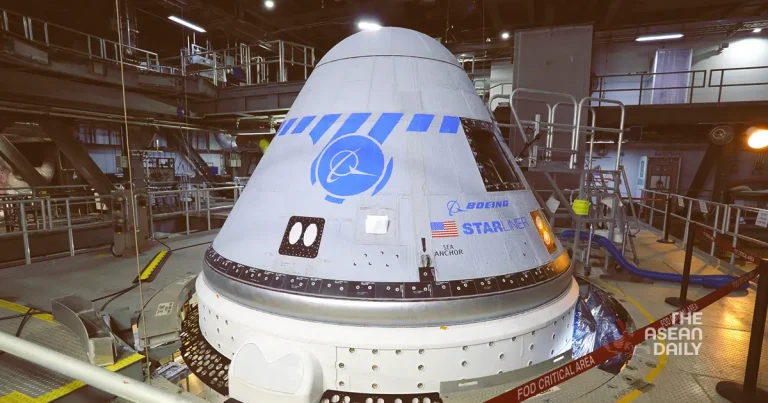11-7-2024 (WASHINGTON) US astronauts Butch Wilmore and Suni Williams, currently aboard the International Space Station (ISS), have voiced their continued faith in the Boeing Starliner spacecraft, despite recent technical setbacks that have delayed their return to Earth.
The pair launched on 5 June aboard the new Starliner, a craft NASA hopes to certify for regular crew transport to and from the orbital outpost. Their mission, originally planned to last about a week, has been extended indefinitely due to thruster malfunctions and helium leaks discovered during the journey.
Speaking via a live press call from the ISS, mission commander Wilmore stated, “We’re absolutely confident,” when asked about their trust in the Starliner team and spacecraft. Williams echoed this sentiment, adding, “I have a real good feeling in my heart that the spacecraft will bring us home, no problem.”
While NASA officials have tentatively suggested “late July” for the return flight, no firm date has been set. The delay stems from the need for further ground-based simulations to better understand the root causes of the technical issues experienced during the Starliner’s flight.
The problems include multiple helium leaks, which emerged during the journey despite one known leak before launch. Helium, while non-combustible, is crucial for providing pressure to the propulsion system. Additionally, some of Starliner’s thrusters responsible for fine manoeuvring initially failed to activate during its approach to the ISS, causing a docking delay.
Boeing executive Mark Nappi shared that the “working theory” for the thruster malfunction was overheating due to excessive firing. Theories about the helium leaks range from debris in the propulsion system to potentially undersized seals.
Despite these issues, NASA and Boeing maintain that Starliner could safely return the astronauts in an emergency. They emphasise that the problems primarily affected thrusters controlling orientation, not those responsible for the crucial “deorbit burn” that will bring the spaceship back to Earth.
However, uncertainties remain. NASA official Steve Stich acknowledged that it’s unclear whether the malfunctioning orientation control thrusters have become degraded, which could necessitate relying on other thrusters during descent.
While Stich insisted that returning Wilmore and Williams on a SpaceX Crew Dragon is not currently being considered, he conceded that this option couldn’t be completely ruled out. Such a move would be a significant setback for Boeing, whose reputation has already been challenged by recent safety issues with its commercial jets.
The Starliner’s performance is particularly crucial as it represents Boeing’s bid to compete with SpaceX in NASA’s Commercial Crew Program. Both companies were awarded multibillion-dollar contracts in 2014 to develop crewed spacecraft following the retirement of the Space Shuttle program. While SpaceX has successfully flown numerous crewed missions since 2020, Boeing’s Starliner has faced repeated delays and setbacks.




